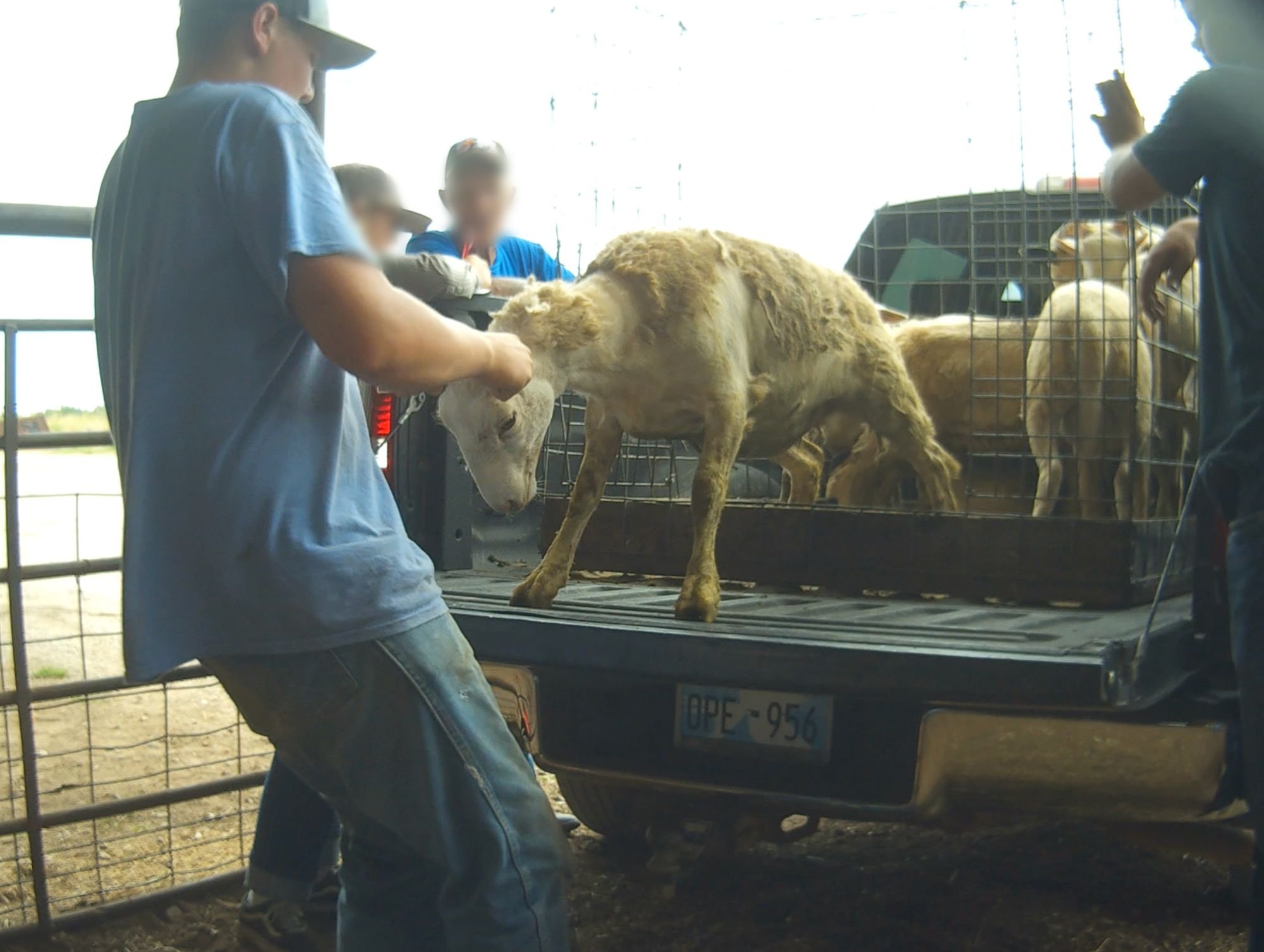
What are livestock auctions?
The secret never exposed
Livestock auctions are generally unknown to the public, but they are linchpins of the US cattle, sheep, and goat industries. Most of these animals make it to slaughter through auctions, which link the smallest farms to the largest corporate producers. In addition, auctions are among the most violent places within all of animal agriculture.
Focusing on auctions, SEED’s evidence debunks the myth that small, independent family farms are humane alternatives, proving that livestock auctions are the equalizers of cruelty within the animal agriculture industry.
Most people don’t think of auctions at all when they think of animal agriculture. After all, 99% of chickens are raised on factory farms, as well as 90% of pigs, 98% of turkeys, and 70% of cows. The nature of poultry and hog factory farming leads to a false assumption that other factory farms, such as those for cattle, must be directly controlled by corporate producers and therefore that family farms raising cattle are different. In reality, 90% of US beef ranches are “family farms,” as are the vast majority of sheep and goat ranches.
Chicken is the most consumed meat in the US, followed by pork and beef, with pork being consumed slightly more. Poultry and hogs tend to be raised in confinement, while beef cattle (with the exception of culled dairy cows) are most often raised in a combination of pastures and feedlots. Sheep and goats are often raised in pastures as well. These points lead the public to believe that the cattle, goat, and sheep industries are more humane. Combined with industry greenwashing and humanewashing, and disinformation regarding regenerative agriculture, beef consumption, per capita, is steadily increasing in the US. This is of particular concern as the beef industry is the most significant producer of greenhouse gasses in animal agriculture. Meanwhile, the US goat market has been on a steady increase of just over 1% per year for the last 60 years.
The National Cattleman’s Beef Association (NCBA) noted at CattleCon 2024 that for consumer trends, Boomers are “currently the highest consumers of beef on a per capita basis. Younger generations have lower consumption rates overall, but consumption has grown slightly since 2020.” The NCBA noted that for addressing consumer concerns, “animal welfare ranks as the top concern.”

What role do livestock auctions play?
There are about 1,000 livestock auctions in the US, used by small farms and corporate slaughterhouses alike. For cattle, sheep, and goat ranchers, as well as small farmers of poultry and hogs, livestock auctions provide a way to purchase and sell animals. Some farms raise animals only up to a certain age, at which point they sell cattle at auctions for finishing or goats for milking. Corporate slaughterhouses use auctions to buy finished animals for packing, or young animals to grow out on large feedlots. JBS notes that in 2021 they bought from over 31,100 “family farm and ranch partners.” For the sale of animals directly to slaughter, most small farms can’t afford to drive to a packing plant every time they have a few animals to sell. The proximity and convenience of auctions is what allows them to operate.
The US is the largest beef producer in the world, with production increasing to this day. The US is also the largest beef consumer in the world. In 2020, the US produced just over 20% of the world’s beef, and that same year consumed 21% of the same. About 36 million cattle are slaughtered each year in the US, and in 2019, 32 million cattle were sold in auctions. About 80% of cattle producers sell at auctions every year. In 2020, 2.32 million sheep were slaughtered, and in 2019, three million sheep were sold through auctions (as some animals are sold through auctions more than once). The most recent USDA data notes that over 60% of goats are sold via auctions, while only around 4% are sold directly from farms to slaughter. The USDA notes: “Breeding stock, such as replacement heifers, young cows, and bulls, also tend to sell through livestock auctions. Livestock auctions also sell a significant number of slaughter (cull) cows and bulls (beef or dairy cows and bulls that are no longer needed for breeding or milk production).” Without auctions, a significant part of the animal agriculture industry cannot function.

Won’t they just disappear with modern farming?
Livestock auctions allow for modern animal farming to exist and are interwoven into our cultural and economic fabric. Auctions themselves date back to 500 BC in Greece. Since they were invented, auctions have been used to buy and sell livestock. The auctioneer was always considered a revered position, and to this day is often a respected member of US farming communities.
Cattle were introduced to the US from Spain in the 1500s, and the Spanish created what is modern cowboy culture. Auctions, including those for livestock, have been present in the US since Europeans arrived. However, back then, cattle were mainly used for hides and tallow. Railroad construction (subsidized by the government, much as animal agriculture is now) allowed western expansion to large tracts of land for cattle to graze. Ranchers began to focus on breeding cattle specifically for meat, and slaughterhouses depended on cattle drives to get animals. Soon, however, trains allowed cattle to be transported to packers. This is why many livestock auctions are located directly next to or nearby railroads. By the mid-1900s, feedlots were developed for efficiency and cost-effectiveness. Better infrastructure and flexibility of movement allowed trucks to take over cattle transport. The cattle industry could then move to smaller auctions located farther from railways. Urbanization played a role as well, with a larger consumer base outside of where animals would be raised and killed for food. Since 1970, individual cattle weight has increased to allow for more profit per cow. This in turn has allowed for smaller family farms to remain profitable, even with less space for their herds.
